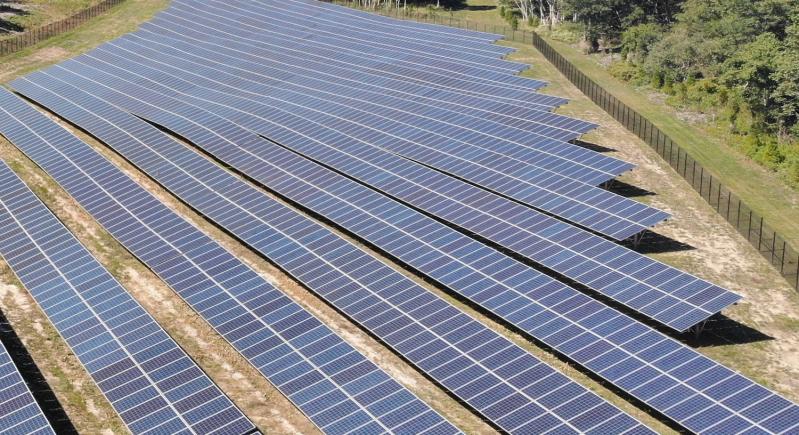Humanity has a golden opportunity to slow climate change enough to save civilization. As the noted environmentalist Bill McKibben points out in his new book, "Here Comes the Sun," solar energy has finally arrived.
Yes, we've been here before. If you're of a certain age, you remember the gasoline shortages of the 1970s and the empty promise by environmentalists that solar energy would save the day. We never ran out of gas, but solar energy had nothing to do with it. What's different now?
The answer is simple. Back then, the only solar technology with a chance to be practical any time soon used energy from the sun to heat buildings and provide domestic hot water. However, despite the best efforts of researchers (and I was one of them), the cost of this technology never came down to an affordable level.
Worse, even if everything had gone well, this kind of solar energy was mostly limited to room-temperature heating applications. Using solar heat to make electricity, though technically possible, requires the same indirect process — high-temperature heat makes steam, the steam drives a turbine, the turbine powers a generator — that is used in fossil-fueled, nuclear, and geothermal power plants. It never captured more than a tiny fraction of the market.
What's different now is what happened to photovoltaics. These are the kind of solar panels we use today. Instead of collecting heat, they produce electricity directly using a process that depends on quantum physics. These existed even in the 1970s, but back then they were so expensive they could only be used in spacecraft.
The miracle has been the steady decline in the price of photovoltaic panels. Between 1980 and today, their worldwide average cost has fallen by 99 percent. The Chinese are leading the way. In the most recent three years alone, China will have installed and exported enough solar panels to rival the entire electric-generating capacity of the United States from all sources — fossil, nuclear, and renewable — combined.
In the past, many energy analysts were pessimistic about the ability of solar and wind energy to supply more than a very limited portion of the total demand for energy. This was because the sun doesn't always shine and the winds don't always blow, but people expect their lights to work whenever they flip the switch. Plus, only about a third of our fossil fuels are used to make electricity. How could photovoltaics affect the other two-thirds?
This problem is well on the way to being solved. First, combining wind and solar energy sources in one regional grid will greatly lessen the variability of both because winds tend to be stronger when sunlight is weaker. Wind energy is a form of solar, because the sun drives the winds. Like solar, it is now cheaper than coal. Second, new technologies, especially batteries, capable of storing large amounts of electric energy are rapidly getting cheaper and more reliable. Third, innovative demand-management schemes are being developed. Some are already being implemented. Fourth, substituting electricity for fossil fuels in transportation, buildings, and industry will increase the potential of solar and wind energy to capture more of the total energy market.
I won't go so far as to say that solar and wind energy can do the whole job. (For all his solar enthusiasm, even McKibben sees a role for nuclear and geothermal.) Solar and wind may, however, satisfy a far higher share of our energy needs than seemed possible just a few years ago.
To take advantage of these opportunities, we'll need an electric grid capable of transmitting renewable energy from where it is produced to where it is used. America's power grid is aging and in desperate need of upgrading. It is vulnerable to system failures and to sabotage by terrorists and agents of unfriendly governments. An additional need to handle large amounts of renewable energy might seem like just one more problem, but in fact it is an opportunity. If we fix the grid, not only will we be more secure, but our future energy bills will be lower than they would be otherwise.
If it's so obvious that we should fix our electric grid, why don't we? One key reason is the welter of regulatory hurdles that any projects to upgrade the grid must overcome. Some regulations are appropriate. Poor design and routing of transmission lines can have environmental as well as social consequences. Nevertheless, the current system throws needless roadblocks in the way. Duplicative environmental reviews by state and federal agencies, poor timing of community involvement in decisions, and the ability of small groups of naysayers to use the courts to hold up projects for years will, unless remedied, prevent the solar renaissance that would otherwise be possible.
At least it will in America. The rest of the world, led by China, will go solar regardless of what we do. It would be ironic if the arms race we lose involves not military hardware but a flood of cheap, reliable solar energy everywhere but here.
In his book, McKibben acknowledges that this solar surge might not happen soon enough. The current federal administration isn't helping. This makes it even more urgent that we do what we can to hasten the process. To learn more, visit the website of the Citizens' Climate Lobby, cclusa.org, and click on Permitting Reform.
Solar energy is real this time. Let it be.
John Andrews has a Ph.D. in physics. He lives in Sag Harbor.

